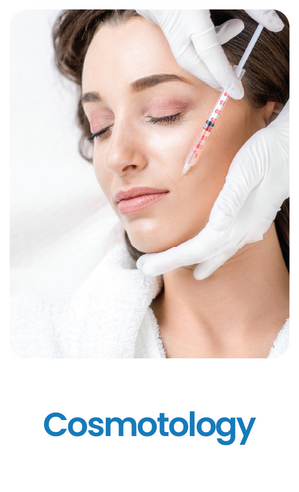PRP Hair Loss
The hair loss for a person can be due to various reasons. Hair loss can also be treated using medication for the underlying disease where the intervention of medical management is necessary. There is evidence that supports that certain medications available to treat pattern hair loss.
Medications such as Finasteride, Dutasteride, and Minoxidil are used to prevent further hair loss rather than the regrowth of hairs.

PRP Treatment Procedure
Hair loss treatment with PRP is a three-step process. The procedure might require 3-6 sessions based on the scalp condition.
Firstly, the blood is drawn from the patient’s arm. It is then centrifuge (a device with a rapidly spinning container to separate fluids of high concentration). The platelet-rich plasma from the centrifuged is drawn using a syringe and then injected into the regions of the affected scalp areas resulting in increased hair growth. During this procedure, no sedation or any medication is required. Hence, the entire method is non-surgical hair restoration treatment both for men and women.
PRP is regarded to be the safe and natural method of hair regrowth as platelets that are inserted into the balding areas stimulate cell growth and encourages the growth of hair follicles.
Your doctor will ask you to visit for multiple sessions, and it may tend to repeated treatments at least for 3 months to have better hair growth.
Expected results to recover will be between 6 months to 12 months. However, most patients can start seeing results in 3 months.
PRP Hair Loss Side-Effects
Since the procedure requires drawing blood from your own body and injecting platelets into the scalp, there are no major complications or side-effects except for infection, injury, inflammation and swelling.
Ideal Candidates for PRP Treatment
PRP Treatment varies from person to person and the hair thinning pattern for both men and women. Individuals with thin hair patterns as well as those who have weak hair growth quality but proper hair follicle function can still be considered for the PRP technique for hair re-growth.
However, people with completely dead hair follicles are not suitable for this PRP technique, and they require the hair transplantation process.
Individuals with chronic infections and certain health diseases may not be the ideal candidates. Hence, complete diagnoses will gauge your eligibility criteria.
PRP Treatment for Hair Loss Video CONSULTATION
Getting an initial VIDEO CONSULTATION with the best cosmetic surgeon for PRP hair loss treatment always better to understand the entire technique. At SurgiDerma, your doctor will explain to you about the PRP treatment procedure. Discuss all your health issues and get a report on your current medical condition as it helps your doctor to plan for the treatment. Certain pre and post-treatment guidelines are required to be followed strictly.






